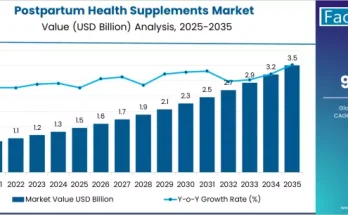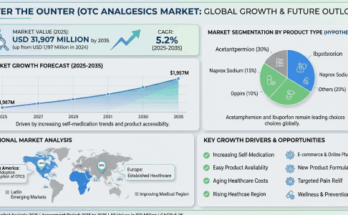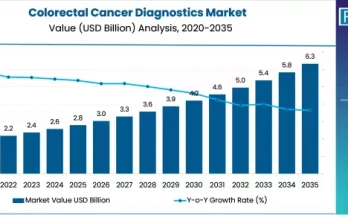The global Optical Coherence Tomography (OCT) for Ophthalmology market is poised for strong expansion, growing from US$ 1.7 billion in 2022 to US$ 6.5 billion by 2032, at a projected compound annual growth rate (CAGR) of 14.3%, according to a new market analysis. This growth underscores a growing reliance on non-invasive, high-resolution imaging for the early detection and management of retinal, glaucoma, and other ophthalmic disorders.
Market Drivers: Increasing Prevalence of Eye Diseases & Demand for Precision Imaging
Several key factors are fueling market growth:
- Rising Burden of Retinal and Glaucoma Disorders
The prevalence of retinal diseases (such as diabetic retinopathy, macular degeneration) and glaucoma is increasing globally. OCT plays a pivotal role in diagnosing and tracking these conditions by offering detailed cross-sectional images of the retina and optic nerve, enabling early detection, treatment planning, and monitoring. - Rapid Technological Advancements
The market is being transformed by innovations in OCT technology. Systems based on Fourier-domain OCT (FD-OCT) are gaining traction thanks to superior image resolution and faster scan times, which make them ideal for routine clinical use. - Growing Demand for Point-of-Care & Portable Imaging
The introduction of portable and handheld OCT devices is helping expand access beyond large clinics and hospitals, reaching outpatient facilities and underserved regions. - Increased Healthcare Spending & Infrastructure Development
Investment in ophthalmic infrastructure, particularly in emerging markets, is enabling widespread adoption of advanced imaging systems such as OCT. Coupled with a rising geriatric population, this is helping drive market expansion.
Technology & Device Trends
- FD-OCT Dominance: Among OCT technologies, frequency-domain (FD-OCT) systems (including spectral- and swept-source devices) are expected to capture a majority share. Their high resolution and speed make them especially well-suited for detailed retinal analysis.
- Handheld & Tabletop Devices: The market is segmented by form factors, with traditional tabletop OCT remaining dominant while handheld/portable systems are rapidly gaining ground. These smaller, flexible devices are proving critical for increasing access in smaller clinics and mobile screening setups.
Clinical Applications & Use Cases
- Retinal Diseases: OCT is widely used for diagnosing conditions such as diabetic retinopathy, macular holes, and age-related macular degeneration.
- Glaucoma: Imaging of the optic nerve head and retinal nerve fiber layer helps in early detection and monitoring.
- Anterior Segment Imaging: While retinal imaging is the primary use, OCT is also leveraged to visualize the anterior segment of the eye, aiding in the diagnosis and management of corneal disease, angle-closure glaucoma, and more.
These applications make OCT indispensable in modern ophthalmic practice for both diagnosis and treatment planning.
Regional Outlook
- North America: Expected to remain a leading region throughout the forecast period due to advanced healthcare infrastructure, strong reimbursement support, and high adoption of cutting-edge OCT systems.
- Asia-Pacific: Poised for the fastest growth. Rapid economic development, increasing access to eye care, and improving healthcare infrastructure in countries such as China and India are driving strong demand for OCT devices.
Competitive Landscape
Major players in the OCT for ophthalmology market are investing in research and development, pursuing strategic collaborations, and launching next-gen products to maintain a competitive edge. Key companies include:
- Carl Zeiss Meditec AG
- Heidelberg Engineering GmbH
- Topcon Medical Systems
- Agfa Healthcare
- Michelson Diagnostics
- Thorlabs, Inc.
- Novacam Technologies, Inc.
- OPTOPOL Technology S.A.
These companies are focusing on innovations such as faster scan speeds, higher-definition imaging, cost-effective systems, and devices that facilitate tele-ophthalmology.
Challenges & Risks
Despite the strong growth outlook, the market faces some headwinds:
- High Equipment Costs: Advanced OCT systems are expensive, limiting access for smaller clinics and in resource-constrained regions.
- Reimbursement Barriers: In some markets, reimbursement policies for OCT procedures are weak or inconsistent, which can limit adoption.
- Competition from Alternative Technologies: Other ocular imaging modalities, such as ultrasound bio-microscopy, still pose competition, particularly in certain clinical scenarios.
- Expertise Requirement: Effective use of OCT requires skilled operators and clinicians who can interpret high-resolution images. Lack of trained personnel can be a bottleneck.
Browse Full Report : https://www.factmr.com/report/optical-coherence-tomography-oct-for-ophthalmology-market
Strategic Implications & Future Outlook
For Eye Care Providers & Clinics:
- To fully capitalize on the benefits of OCT, investment in training clinicians and technicians is essential.
- Integrating portable OCT devices can expand diagnostic capabilities to smaller centers and underserved areas.
For Device Manufacturers:
- There is significant opportunity in developing more affordable, modular OCT systems.
- Innovation in software — particularly AI-assisted image analysis — can further boost diagnostic accuracy and workflow efficiency.
- Collaborations with telemedicine providers can help reach remote patient populations.
For Investors & Policymakers:
- Supporting regulation and reimbursement frameworks for diagnostic technologies will be critical to drive adoption.
- Funding programs to equip primary eye-care centers with OCT systems can have long-term public health benefits, especially in emerging markets.



